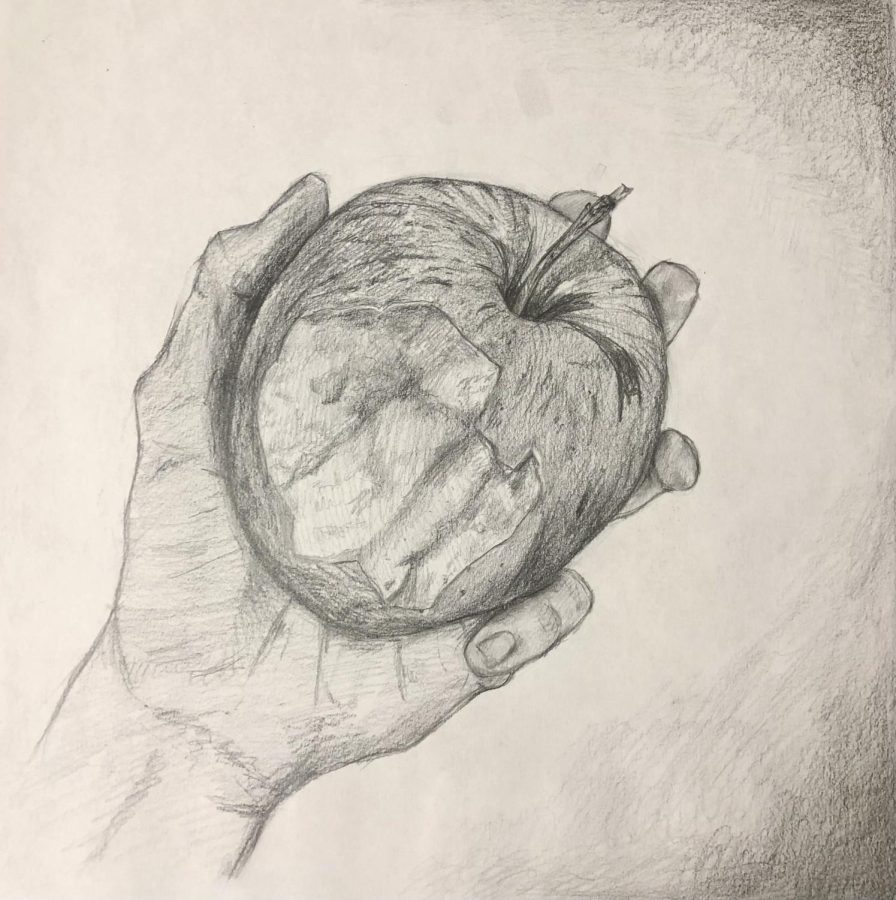Fine arts students reflect on impact of underfunding, out-of-pocket expenses, staff support
February 11, 2022
Editor’s Note: This article first appeared in the Feb. 8, 2022 flipbook.
Hunched over a drawing of a delicately colored apple, pencil posed meticulously in hand, Sean O’Neill dove into a project for his studio art class.
After assessing his limited, self-supplied materials — five black pencils neatly wrapped with a rubber band and a brown canvas bag of colored pencils — the art history freshman said he was wrought with exasperation.
“It’s frustrating feeling invalidated,” O’Neill said. “You’re walking and seeing almost million dollar buildings being constructed, and some of my friends and I are struggling to afford some basic art supplies.”
As he sketched, O’Neill said he artistically articulated his frustration with the underfunding in the College of Fine Arts and the impact it has on the fine arts community. O’Neill said while UT spends millions on new sports facilities, art students like him face unmanageable out-of-pocket expenses, and are often unable to afford the necessary supplies to succeed in their field.
Studio art sophomore Sophie Stoeger said egregious expenses for art supplies are a prevalent issue among students in the fine arts community that make school shopping incredibly taxing.
“(My friend) spent $300 for just one class,” Stoeger said. “There (are) times when he can’t even afford food, and he’s spending that much on the materials for one class.”
Though frustrated by the often outrageous cost of being a fine arts student, O’Neill said he understands the complicated nature of the issue and feels grateful for the internal support from the fine arts staff.
“I’ve seen my fine arts teachers do everything they can to help students, but I wish the University could lend more support,” O’Neill said.
Studio art lecturer Katy McCarthy said she sympathizes with the fine arts students’ disappointment but acknowledges the ubiquity of the problem, noting that many art departments across the country face underfunding. If more funds were allocated to the college, Professor McCarthy said she would want to see that money spent on more student support.
“I’m a big believer in more scholarships for students,” McCarthy said. “That feels really important to expand upon.”
Despite the circumstances, McCarthy said the professors within the College of Fine Arts do a wonderful job giving students as much support as possible.
“I have a super supportive program director,” McCarthy said. “I’ve felt that she has done a great job supporting our classrooms.”
Stoeger said that despite the inconsistent funding, she loves her college, the eclectic environment and the supportive staff.
“As an art student, whenever I walk into the art building, I just feel so much care for my major,” Stoeger said. “I love being around other students in my major.”
While O’Neill said he has enjoyed his experience in the College of Fine Arts thus far, he wishes costly supply bills and out-of-pocket expenses for class necessities were a thing of the past.
“I feel lucky and proud to be a Longhorn,” O’Neill said. “But, if the University believes that what starts here can change the world, they can start by making sure the fine arts college is treated with the same respect as any other college.”











